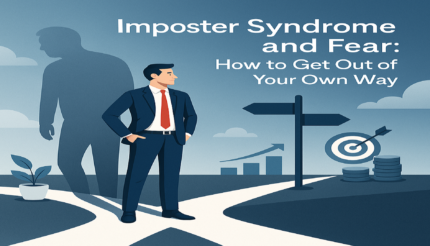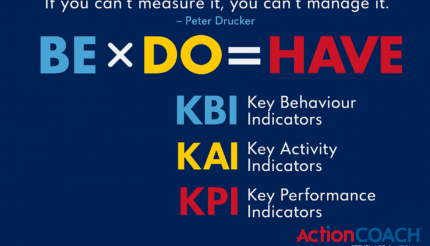You’re already running an emotional regulation system. You’re just running the penalty version.
The one where a client cancellation bleeds into dinner. Where a tense morning at home wrecks your commercial judgment. Where you “save” 90 seconds on a reset and spend 90 minutes on damage control.
Most business owners treat emotional resilience like a nice-to-have. Something for people with margin. But 72% of entrepreneurs are impacted by mental health conditions, and the ones struggling mentally see 38% less business growth than those who aren’t.
The cost is real. You’re paying it right now.
Why Your Business Brain Sabotages Your Home Life
Business rewards speed. Relationships run on presence.
When you walk through the door in efficiency mode, your partner doesn’t want your solution. She wants to be seen. But you’re already three steps into fixing the problem before she finishes her sentence.
Speed feels like dismissal.
Here’s what you miss: “How was your day?” isn’t logistics. It’s a bid for connection. When she repeats the same question twice, she’s saying “you didn’t catch me the first time.”
You jump in with advice. You interrupt the first 90 seconds. You offer a clean solution, and her energy drops.
Technically right. Relationally wrong.
That’s the gap that costs you. Not in revenue, but in the distance that compounds over months.
The 90-Second Window That Changes Everything
When a setback hits, your body goes into threat mode. Heart rate spikes. Jaw tightens. Vision narrows. Your amygdala takes the wheel.
You have about 90 seconds to interrupt that cascade before it hijacks your judgment.
The fix is physiological, not philosophical. Stanford research shows that cyclic sighing produces greater mood improvement than mindfulness meditation. The technique is simple: short inhale, top-off sniff, long exhale through your mouth.
Do it twice. You just activated your vagal brake.
Add one more step: name what you’re feeling out loud. “Activated. Disappointed.”
That’s called affect labeling, and it dampens amygdala activity while re-engaging your prefrontal cortex. You’re telling your brain: this is data, not identity threat.
Within 10 to 20 seconds, you feel the shift. Breath deepens. Urgency drops from 8/10 to 4/10.
That’s your window. Use it.
The Three-Layer Firebreak
You need more than a breathing technique. You need a system that stops work stress from poisoning home time and home chaos from wrecking your commercial decisions.
Here’s the firebreak:
Layer 1: Physiology (90 seconds)
Two physiological sighs. Name the emotion. Drop your shoulders, unclench your jaw, soften your gaze. Half-speed your next sentence.
Do this before you email, before you speak, before you decide.
Layer 2: Cognitive Container (3 to 5 minutes)
Open two notes on your phone: WORK and HOME. Each gets four lines:
Facts: what actually happened (observable only).
Story I’m telling: the narrative running in your head.
First next move: one concrete action.
When I’ll do it: specific time slot.
Close the note. If it’s not in the container, it’s not allowed in your head right now.
Your brain relaxes when it sees a when. Without a when, it keeps the tab open and calls it “processing.”
Layer 3: Operational Guardrails
24-hour swing rule: no pricing changes, hiring decisions, or strategy pivots within 24 hours of a shock.
Home first 90 seconds: warmth before info. Reflect one feeling before any fix.
Work replace-the-unit: every lost deal triggers scheduling two new first conversations.
These aren’t suggestions. They’re circuit breakers.
When Both Hit The Same Day
Client cancels at 3 PM. You walk through the door at 6:15 PM still activated. Your partner mentions the school trip payment bounced.
Here’s the exact sequence:
At the moment of the business hit: 90-second physiology reset. Write Facts/Story/Move/When in your WORK note. Schedule two new first meetings. Close laptop.
In the car park: four breath cycles (in 4, out 8). Panoramic gaze. Say quietly: “Patient and kind.” Switch phone to Home Focus mode.
First five minutes at home: hug, eye contact, one reflective line. Ask the menu question: “Do you want me to listen, brainstorm, or take it off your plate?”
No work talk unless invited.
After dinner: if you promised a time-boxed work action, set a timer, do the one move, log it, shut it down. Rejoin home.
The firebreak prevents cross-contamination at the nervous system level. Containers stop cognition from looping. Guardrails protect judgment and intimacy.
Reflection Versus Rumination
Most resilience advice tells you to “process your feelings.” That’s useless.
Here’s the clean line: reflection produces a decision. Rumination produces a feeling.
If you don’t leave with a next move on the calendar, you weren’t reflecting. You were stewing.
Five quick tests:
Time: Reflection is time-boxed (2 to 10 minutes). Rumination is open-ended.
Focus: Reflection is specific (“last night’s greeting”). Rumination is global (“I’m a bad husband”).
Language: Reflection uses verbs (“I’ll repair, schedule, ask”). Rumination uses labels (“always, never, failure”).
Body: Reflection lowers arousal. Rumination keeps you keyed up.
Output: Reflection ends with one behavior plus when. Rumination ends with more thoughts.
Run this five-minute protocol the moment you feel anger turn inward:
Minute 0 to 1: Two physiological sighs. Say “Activated. Disappointed.”
Minute 1 to 2: Write facts (observable only), value poked (presence, reliability, respect), one controllable cause.
Minute 2 to 3: Write one line: “Next time, I will…” (behavioral, tiny, testable).
Minute 3 to 4: Put it on the calendar with a time.
Minute 4 to 5: One sentence of self-respect: “Good catch. I’m someone who repairs quickly.” Walk away.
Your brain relaxes when it sees a when. Without a when, it keeps the file open.
The Cost Of Not Having This
One heated reply can lose a £20,000 account. A 90-second reset costs 90 seconds. Replacing that revenue costs weeks.
Reactivity raises error rates. You “save” time now and spend hours on apology tours and rework later.
Shock triggers panic discounts, rushed proposals, sloppy forecasting. Variance explodes. Your team mirrors your panic.
Bringing work heat through the door creates distance. Distance becomes days. Days become months. That cost is unpriced, but it’s real.
Rumination steals the same mental RAM you need for strategy. No container means no focus.
Permanently high sympathetic tone means poor sleep, short fuse, flatter creativity. You feel slower and call it “being busy.”
You will spend the time either upstream on regulation or downstream on fallout. Upstream minutes are optional. Downstream hours are compulsory.
Choose your hard.
The One Thing To Do In The Next 24 Hours
Set a 60-second “Doorway Reset” reminder for tonight and run it once.
Create a phone reminder for your usual arrival time (18:00 works for most). Label it “Doorway Reset: 60s.”
When it pings, do this tiny script at the door:
Two physiological sighs (quick inhale plus top-off sniff, long exhale).
Say quietly: “Present over perfect.”
Put phone in pocket. Drop shoulders.
Walk in with warmth before info. Reflect one feeling you notice: “Long day? I’ve got you.”
That’s it. You just told your brain a when, which kills rumination and builds the habit loop. It prevents work-to-home bleed at the exact crossing point.
Run that once tonight. If it helps, keep the reminder daily on weekdays.
Everything else in the system plugs into this hinge.
You’re already paying for a system. Start paying for the one that actually works.





